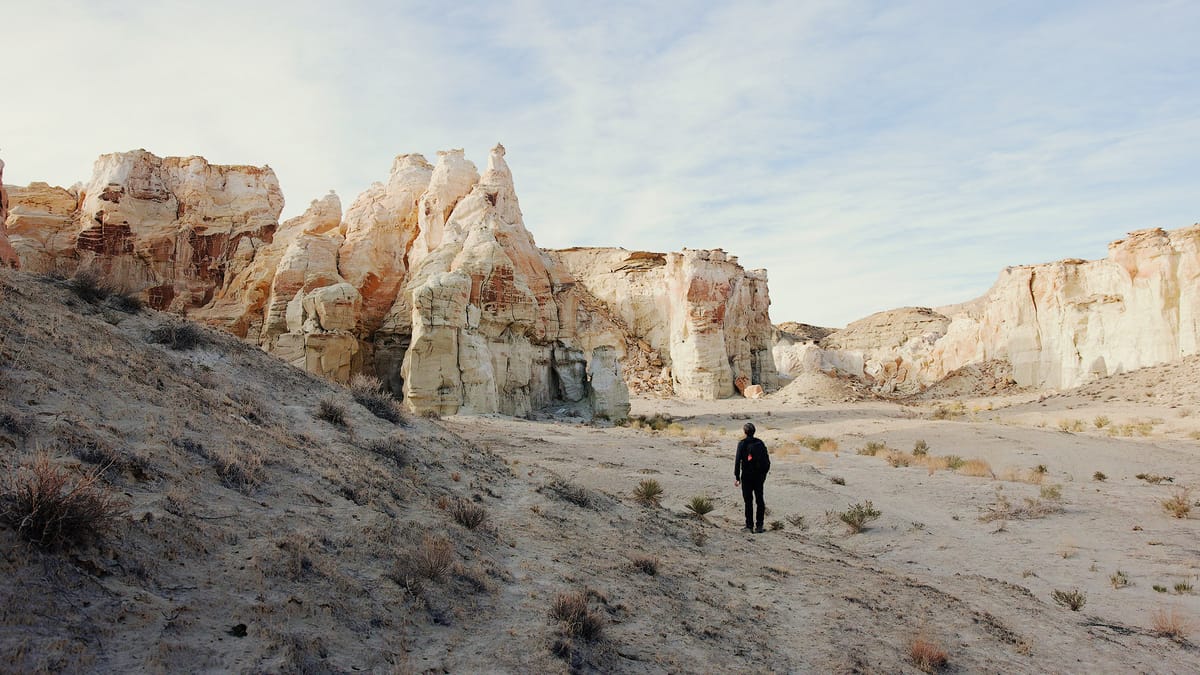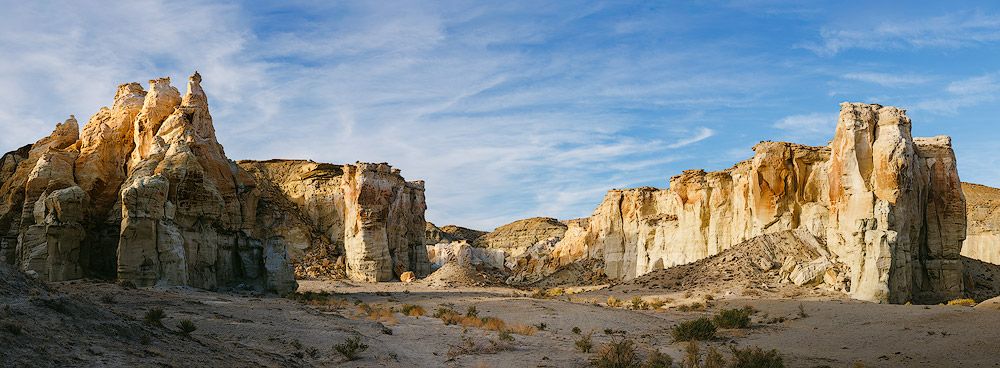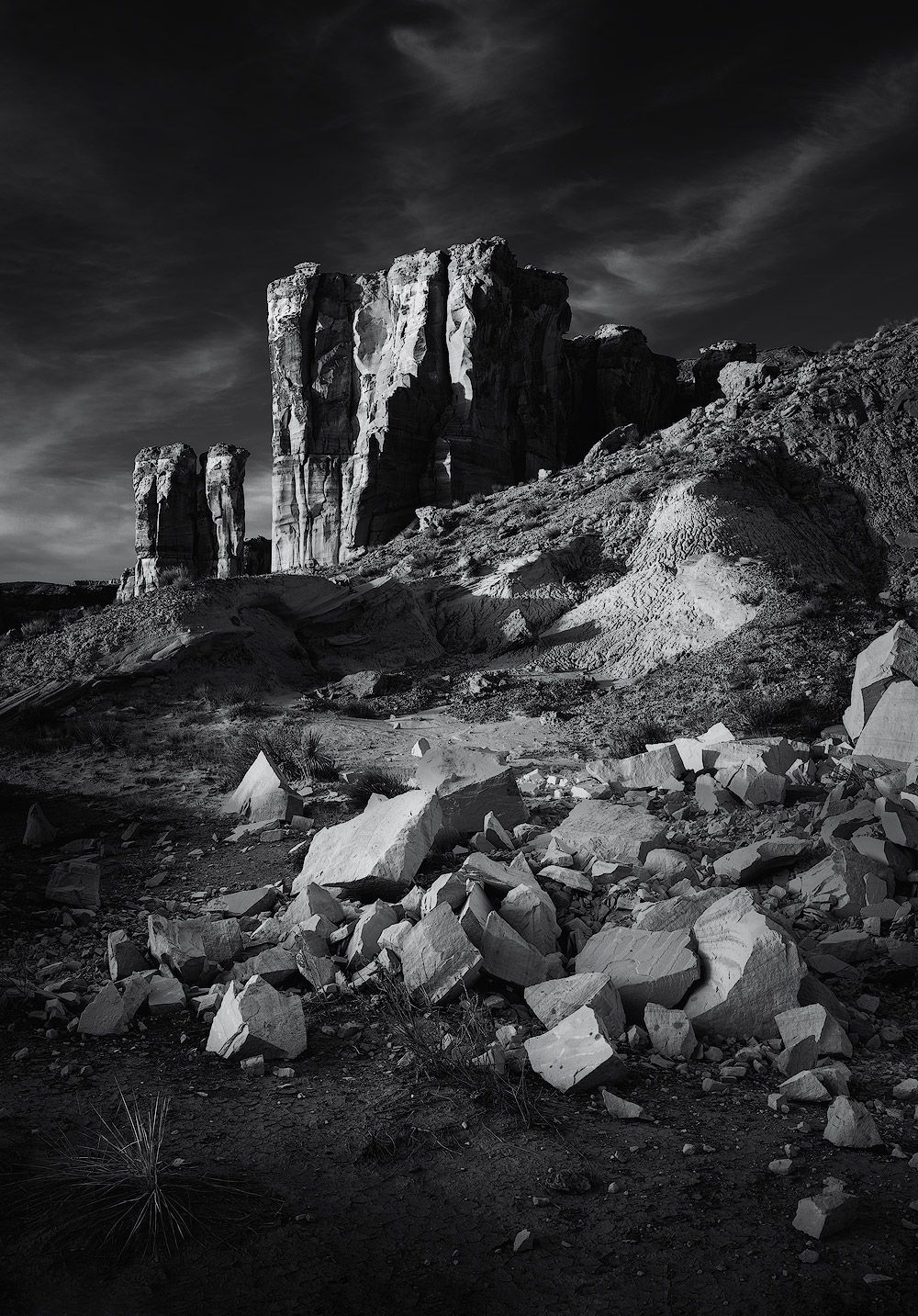Blown away in Utah
Finding landscape images off-the-beaten path in southern Utah

I was in Utah a few weeks ago, photographing various landscapes around Capitol Reef National Park, Kodachrome State Park, Grand Staircase Escalante, Factory Butte, and others, when I decided to take a chance on an unnamed area I'd never been to and knew nothing about. Looking from above on Google Earth, the area (owned by the Bureau of Land Management) appeared similar in topography to other places I'd been to in Utah, and appeared to have plenty of the bright white sandstone I love photographing.
I found little-to-nothing about it online. What images I did find were all bright, sunny, high-contrast shots from various hikers' smartphones. But looking at their images, I could tell the DNA was there — colors, textures, and shapes that might be great if photographed in better light. I formed a picture in my mind of what the area probably looked like, thinking it wouldn't be that large or varied, then ventured out assuming I could knock it out in half a day.
My expectations were completely blown away.
After hiking a couple of miles to get there, I was confronted with an enormous valley framed by towering spires of glowing orange, yellow and pink rock. Nestled in-between, mysterious white hoodoos rising from the earth alongside piles of rocks and boulders that had chipped-off the decaying buttes high above.

But underneath it all, the landscape had presence. It had weight. The kind of place you feel in the pit of your stomach.
Everywhere I looked, there was potential for good images, but the landscape proved too large to explore fully with what light remained in the day. If I ran around hurriedly with my camera and tripod trying to find the best possible subject and composition, I'd burn out and most likely leave without creating anything of value.
What I needed to do was slow down, focus, and be patient. Work with subjects nearby and suppress the urge to chase down what might (or might not) be around the next corner.
It was then I came across an unusual grouping of sharp, white boulders that had fallen long ago. With the camera positioned just so, I could see the opposing angles of both rocks, plus a glowing butte in the distance filling the empty space in-between.

The boulders were beautiful all on their own, and could have been photographed by themselves, but I wanted the image to have depth. I wanted to create the appearance of layers to heighten visual interest and create a richer, more three dimensional image. It took a number of attempts using different tripod heights, angles, and focal lengths, but I eventually found a sweet spot.
I also like how the black and white treatment makes scale and proportion not as clear, for sometimes I look at this image and think the boulders are mountains; standing thousands of feet high (when in fact they were only about five feet). I assume most viewers would figure it out after noticing the illuminated grass in the foreground, but I very much enjoy the momentary, altered perception of reality.
And, of course, there is the light, setting low in the sky right of frame. I heard a cinematographer once speak about shooting into the shadows when lighting for film. The practice of lighting a subject on the opposite side of their face, with their darker, shadowy side facing the camera to create depth and drama.
Something about that clicked with me, and ever since I've looked for compositions where the light is providing just enough influence to define a subject's shape and form, but nothing more.
I had no intent of creating a black and white image, but later realized the way I had visualized the subject in the field didn't work as a color photograph. Color made the image feel busy, unmotivated, and didn't emphasize what drew me to the scene originally — those sharp, angled lines in the rocks.
I captured other images that day, but the one above was my favorite. I don't know if it will always be my favorite (photographs have a funny way of revealing their strengths and weaknesses over time), but right now it's the one.
Here's another one I like almost as much, but wish it were a little less busy and the light wasn't so bright in the midground, for it isn't entirely clear what I should be looking at (foreground? midground? background?). Going to put this one away for a while and let it marinate before attempting to edit it again.

For me these images aren't simply attractive landscape photos (or at least I hope they are), but a personal reminder of how important it is to seek out new subjects and compositions in unproven places. To take risks and follow what inspires you, even if there's a high probability you won't return with anything to show for it.
Luck was unquestionably on my side that day, but that luck never would have happened had I not rolled-the-dice and tried something new and unproven.
Now all I can think about is going back and exploring some of the areas I didn't have time for. I mentioned this in my video from there, but I might use that opportunity to bring others along with me...? I've thought about organizing workshops before, but I think this experience may have pushed me over the edge. If I do decide to put one together, my email newsletter subscribers will be first to know.



